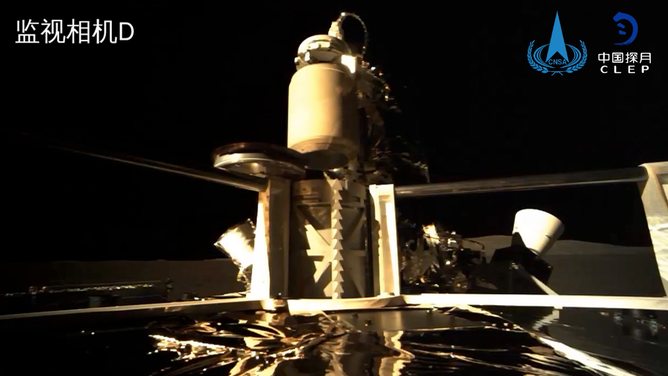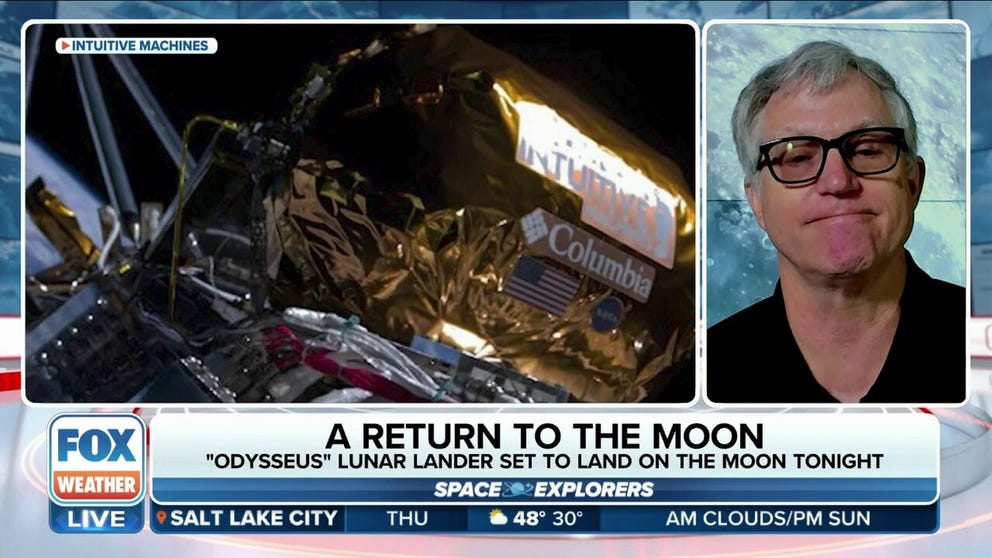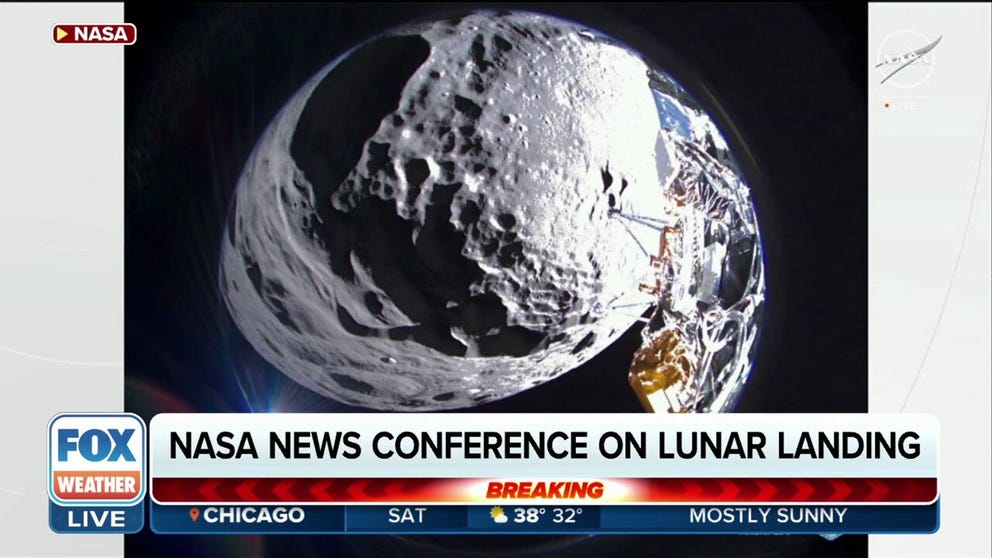China's Moon probe launches back toward Earth with sample from far side of lunar surface
China's mission will mark the first time samples from the far side of the Moon are brought back to Earth. Once the samples are taken to a laboratory for analysis, teams will be able to determine the age and composition of the lunar material collected.
NASA science hitches a ride to Moon with Intuitive Machines lander
FILE VIDEO: NASA CLPS program manager Chris Culbert explains what science payloads NASA is sending to the Moon with the Intuitive Machines Moon lander.
China hopes to be the first nation to return a sample from the far side of the Moon after its Chang'e-6 probe blasted off from the lunar surface on Tuesday.
After launching from China on May 3, Chang'e-6 landed near the Moon's South Pole Aitken Basin on Saturday. The mission was designed to collect rock and lunar dirt for return to Earth using a drilling tool and a robotic arm.
On Tuesday, the China National Space Administration (CNSA) said the ascent vehicle carrying lunar samples launched and successfully entered lunar orbit. The ascent vehicle is expected to dock with an orbiter and transfer the lunar sample.
The sample return mission builds on China's 2020 Moon landing with the Chang'e 5 lander, which also collected and returned samples of the Moon. Chang'e 5 landed near a region of the Moon visible to Earth known as the Ocean of Storms. Studies of those samples found that the rocks collected were about 2 billion years old.

China's Chang'e 6 lander during drilling operations on the far side of the Moon.
(China National Space Agency)
As part of the Chang'e 6 mission, the lander unfolded a Chinese flag on the Moon's far side for the first time. The mission also carried science payloads for the European Space Agency, including instruments from France and Italy.
China did not specify when the samples would land back on Earth.
FIRST AMERICAN MOON MISSION SINCE APOLLO ERA ENDS AFTER LUNAR LANDER DOESN’T ‘CALL HOME’
"The orbiter and returner combination will fly around the moon, waiting for the right time to return for the lunar-to-Earth transfer. Near the Earth, the returner will re-enter the atmosphere carrying the lunar samples and is scheduled to land at the Siziwang Banner landing site in Inner Mongolia," according to CNSA.
Once the samples are taken to a laboratory for analysis, teams will be able to determine the age and composition of the lunar material collected.
China completed its first landing on the far side of the Moon in 2019 with the Chang'e 4 lander and the Yutu 2 rover. The missions are named after the Chinese Moon goodness, Chang'e.
More Moon missions
NASA, Intuitive Machines provide update on Moon lander
Officials from NASA and Intuitive Machines gave an update on the status of the Odysseus lander that touched down on the Moon on Thursday.
While NASA prepares to return humans to the Moon under the Artemis program by 2026, there is a fleet of international robotic missions headed for the lunar surface in the coming years.
After successfully landing the first private mission on the Moon in February, Houston-based Intuitive Machines is preparing to send another robotic mission (IM-2) in late 2024.
IM-2 is one of four lunar missions between the U.S., Japan and the European Space Agency throughout the next year.

